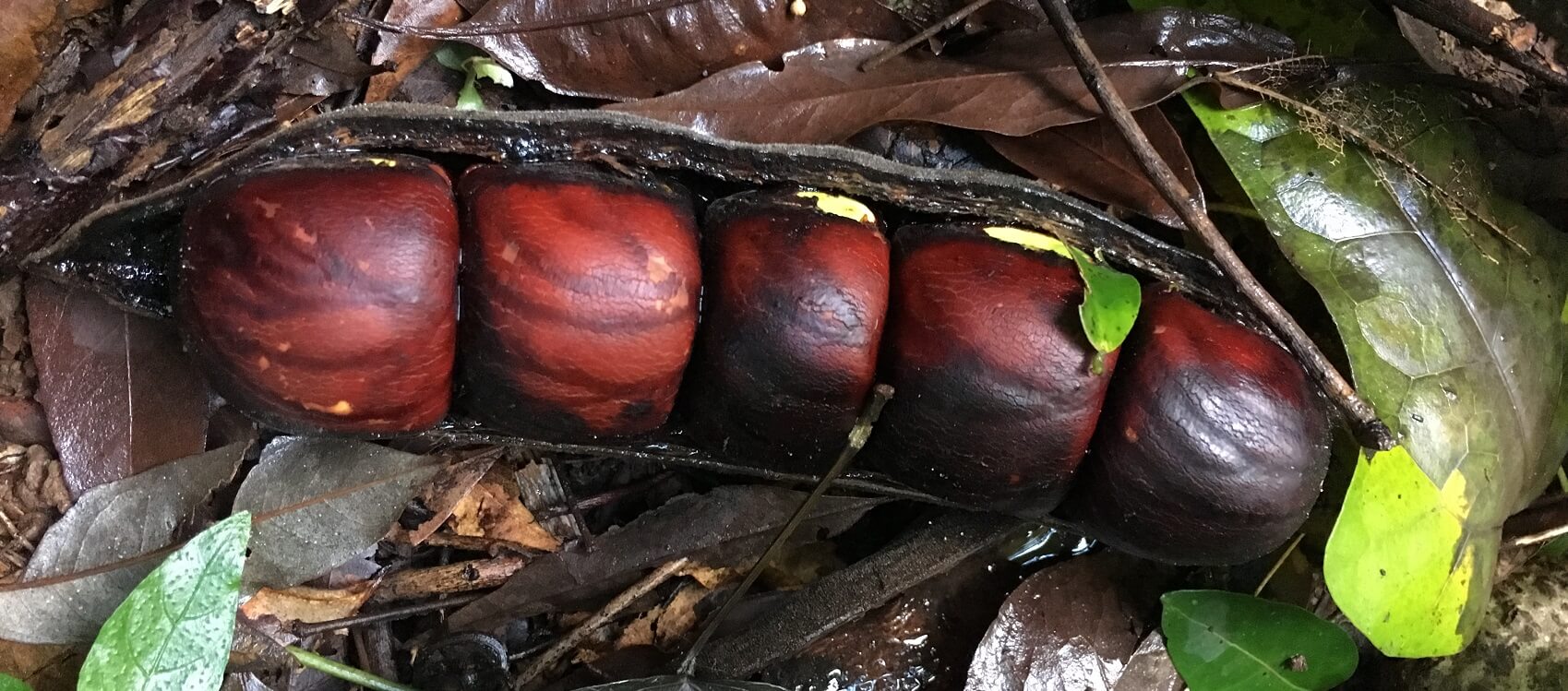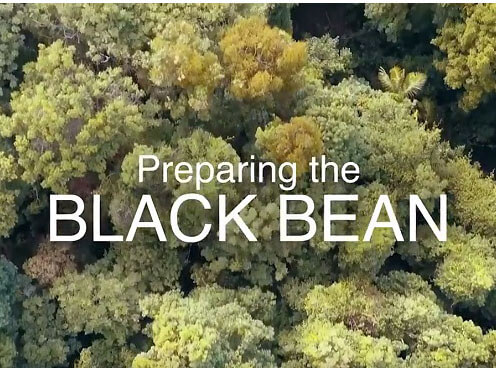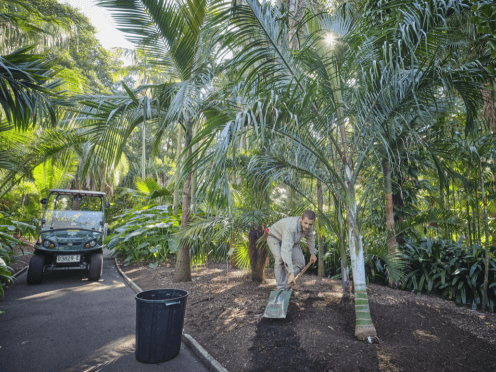Genetic studies of Castanospermum australe (the black bean) discovered that its unexpected distribution pattern in NSW is the result of humans deliberately dispersing this tree to new places.
While previous studies have used genetics to map human-led spreading of crop plants, this is the first time that published research has demonstrated the deliberate and rapid spread of a non-cultivated species.
The black bean tree is a culturally important riparian (growing near a river) tree that produces toxic but highly nutritious water-dispersed seed. It is common in the understorey of old growth forests, growing up to 40 metres high, and producing long orange to red flowers. Its large fruit-pods are buoyant and salt tolerant, and the seeds within them are known to have been detoxified and consumed by rainforest dwellers in the Australian wet tropics for at least 2,500 years.
Lead author Dr Maurizio Rossetto studies the factors that influence the distribution of Australian plants by looking at genetic variation within and between populations. When he examined the DNA extracted from the black bean trees in northern NSW, he noticed unusually low genetic diversity among the many populations that grow from the coast to the uplands, often away from natural water courses.
New genome sequencing and analysis techniques can be powerful tools for tracking the movement of a species over thousands or millions of years, and explain how and when it came to be living in a particular place. Almost all the trees sampled in this study were shown to originate from a single maternal lineage, showing fast, inland expansion. Based on ecological and environmental information, Dr Rossetto could rule out dispersal by natural factors such as rivers, rainforest birds and mammals and identify movement by local indigenous people as a more plausible alternative.
The tree’s journey through NSW as told by its genetics, is compatible with the traditional Dreaming tracks that local Aboriginal people have travelled for thousands of years. These are related within traditional Songlines and stories that support traditional knowledge sharing. Studies of linguistic evolution along these pathways further support the close interaction between this rainforest tree and the local indigenous e people in what seems to have been a mutually beneficial journey for both species.
Dr Rossetto is hopeful that this research will pave the way for many more investigations into Australian plant evolution saying, “We still have a lot to learn about how plants and people have influenced each other in Australia over tens of thousands of years. Many of our ideas about traditional lifestyles and interactions with nature are being challenged by genetic information. Studying the DNA of plants allows us to look back in time to track evolutionary pathways and reveal many exciting and surprising stories from the past”.
If you are a journalist and have a media enquiry about this story, please click here for contact details and more information.




